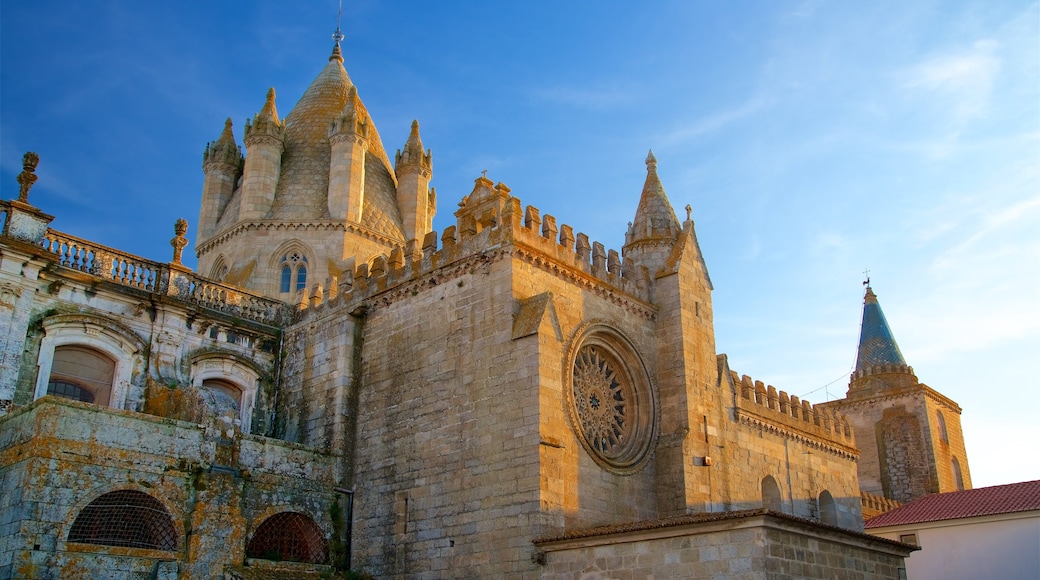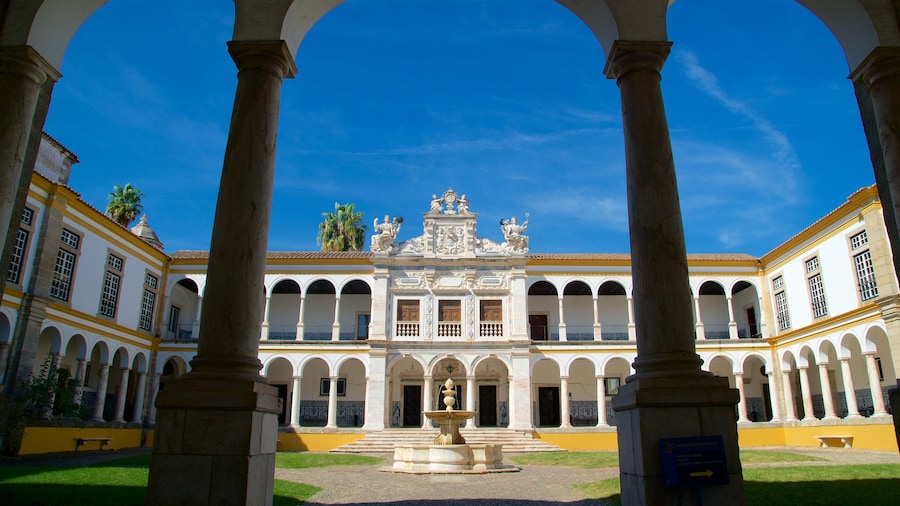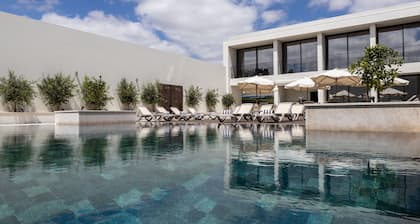Évora Cathedral is among the many wonderful and well-preserved historic sites that make the scenic town of Évora so inviting. Visit this huge, beautiful building and try to spot the many features that date from different periods. The building incorporates Gothic elements as well as Romanesque ones.
Work originally began on a cathedral in this spot as long ago as 1186. Come to it today, however, and find that most of the remaining parts of the building date from later on. Great renovations took place in the 15th and 16th centuries and the building was further improved in the 18th century, when King João V funded a new chapel for it.
The cathedral gains its dramatic and imposing appearance from the fact that it is largely made of granite, although there are marble features to look for too. Step through the large arched doorway and explore the cathedral’s grand interior. See the high vaulted ceilings overhead. Linger to take in the details of the beautiful and ornate 16th-century choir stalls. And look for the statue of the Virgin Mary which depicts her during her pregnancy.
Visit the chapter room, which houses the cathedral’s own museum. On display here are many opulent items of historical and religious significance. These include a scepter belonging to the Cardinal-King Henrique and a 17th-century reliquary that holds fragments of wood that some believe came from Christ’s cross.
Finally, climb the spiral staircase that leads up to a terrace on the roof. Bring your camera and take plenty of photos of the stunning vistas of the beautiful Alentejo area.
Walk to Évora Cathedral in minutes from Praça do Giraldo, the town’s main square. Entry to the building is free. Afterward, take some time to explore the many other attractions clustered in this historic area of the town. These include the fascinating Évora Museum and the ancient Roman Temple of Évora, one of the best-preserved Roman ruins on the Iberian Peninsula.













